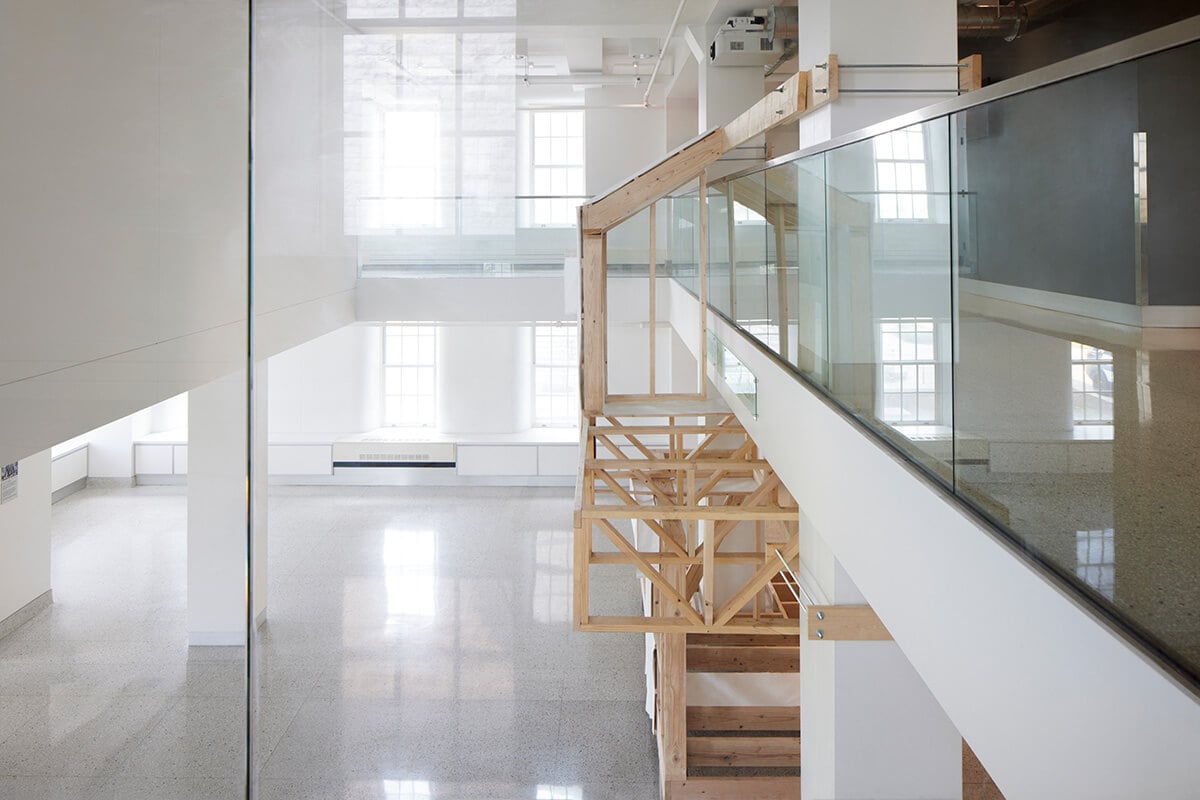American Framing highlighted ideas of materiality and culture through technique of light timber framing—also known at the time as “Chicago construction,” which originated in the Midwest in the early 19th century. This project helped lay the groundwork for Tiffany Xu, the University at Buffalo’s most recent Banham Fellow, and her students, who expanded on the legacy of material studies in a recent exhibition.
Staged in the lobby of Hayes Hall at the university’s South Campus this past spring, Lightly Speaking references light timber framing and emphasizes its tectonic rules. Picking up at the end of the industrial revolution around 1840, Xu’s work draws on American principles of mass construction to highlight economic consequences made evident through architecture.
“Due to wood’s forgiving workability and relatively low barrier to entry, matters of detailing today often fall into the realm of lay hobbyists and general contractors,” Xu shared in an artist statement. “However, it also lies at the core of highly coordinated multi-family podium projects and boutique designer residences. What unifies these otherwise disparate groups is their adherence to a collection of medium-specific rules.”
The exhibition is the culmination of the student work and research Xu executed as part of the Banham Fellowship, named after the English architectural critic and writer Peter Reyner Banham. Each year, the fellows’ work situates architecture within the general field of sociocultural and material critique. For Xu, the study of medium specific tendencies reveals how material research might yield new approaches to design.
Lightly Speaking, which closed in July, featured a large-scale, timber-framed design by Xu. The structure was constructed using Douglas fir, zinc-plated steel, spun polyethylene, polyester, and concrete. While the installation does not completely expose the framing, it references the obscurity of framing in most contexts, playing on the relationship between the seen and unseen.

Located in the double height entry atrium, the installation occupies the full height of the space. In practice, Xu shared this allows the work to become a part of the architecture, impacting how visitors move through the space. In the surrounding space, student work from a spring graduate studio led by Xu was also on display. The students began with a study of varying examples of light timber framing, then used these principles to design structures situated along one of three Buffalo water features: the Buffalo River, the Erie Canal in Tonawanda, or the Erie Canal in Lockport.
Xu’s work utilized both theoretical and material practice, referencing works like American Framing, Details of Modern Architecture by Edward Ford, and Kenneth Frampton’s Studies in Tectonic Culture. The manufacturing of the work was also a key component of the study, through the construction of the installation itself, a deeper more fundamental understanding of the material quality was accessed.
“The fabrication process also taught me a lot about the system’s tolerance, and the extent to which the medium permits control of craft,” Xu shared over email with AN. “The material is just so forgiving, it is easy to see why it is so pervasive and a little surprising how it has not yielded more conceptual experimentation.”
→ Continue reading at The Architect's Newspaper
